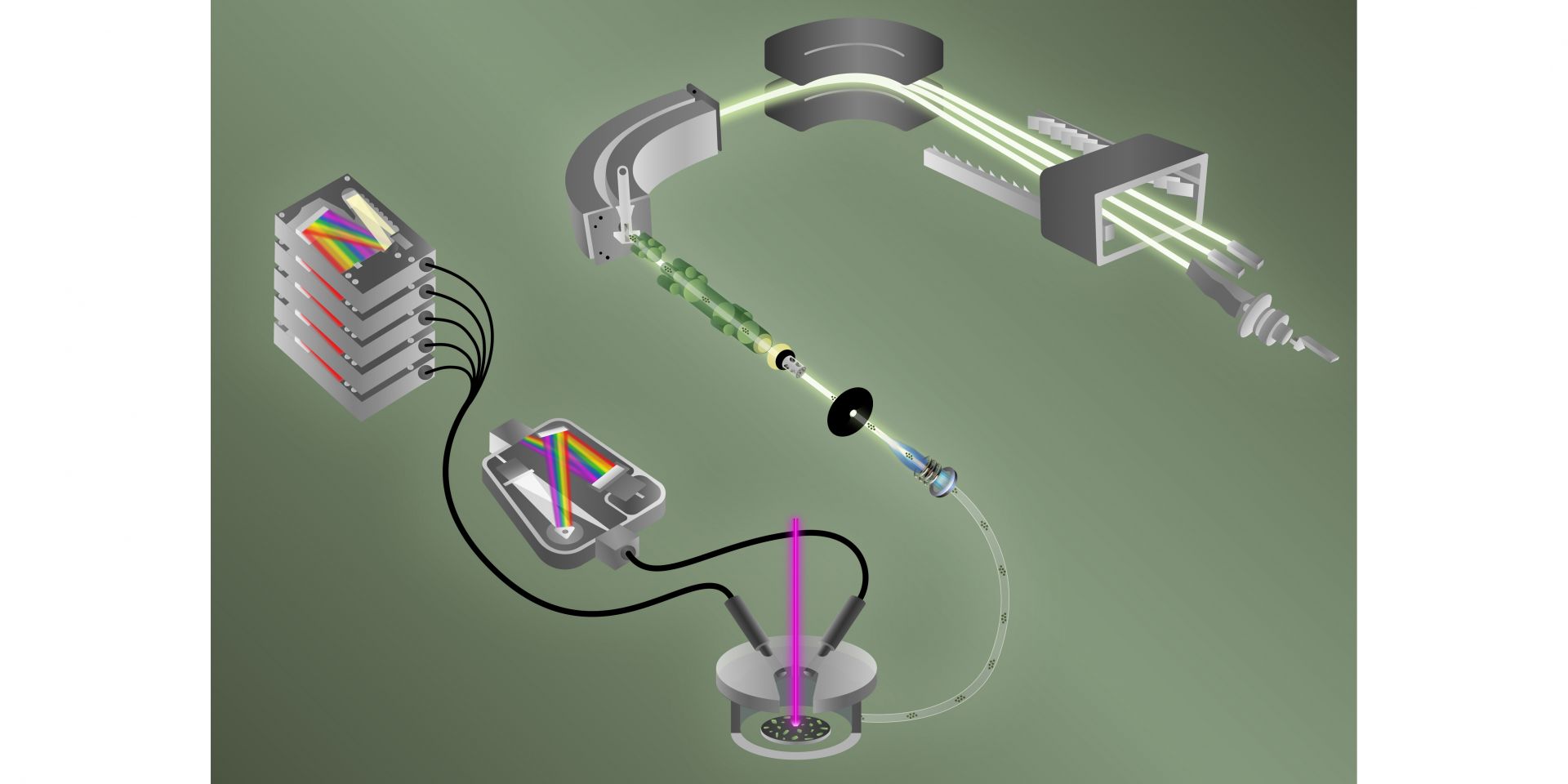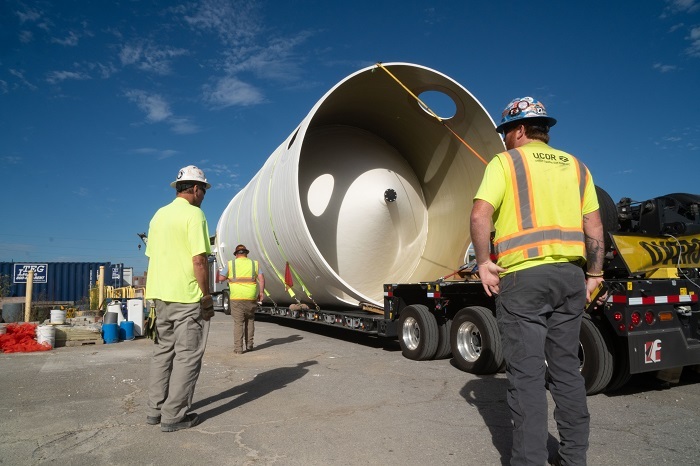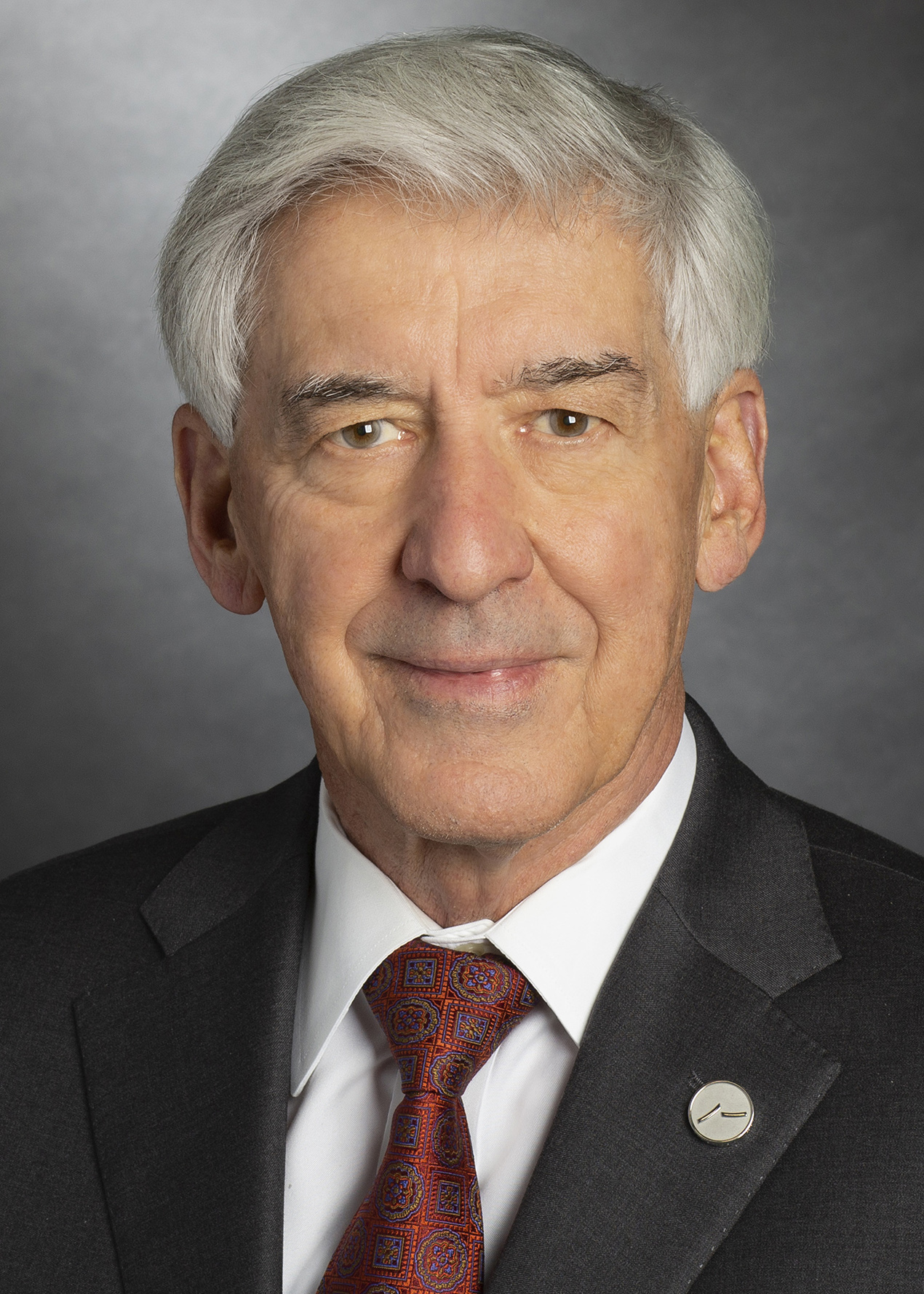ORNL’s tandem technologies detect fluorine and isotopes of uranium at the same time to discern the fingerprint of a nuclear material made for fuel or weaponry. (Image: Benjamin Manard and Jacquelyn DeMink/ORNL)
By combining two techniques, analytical chemists at Oak Ridge National Laboratory have for the first time simultaneously detected fluorine and different uranium isotopes in a single particle. Quickly detecting both elements together may help International Atomic Energy Agency inspectors determine if and when undisclosed enrichment has taken place. The findings, published in the Journal of the American Chemical Society, “push the limit” of how fast single particles can be characterized in terms of their chemical, elemental, and isotopic compositions, according to a September 26 news release from ORNL.
Attendees at the North Carolina Nuclear Energy Industry Advisory Council meeting. (Photo: Steve Rea)
A mix of nuclear professionals and advocates gathered las week to discuss public policy, workforce needs, and regulatory matters at a meeting of the North Carolina Nuclear Energy Industry Advisory Council.
Nuclear stakeholders celebrate “powerful clean energy comeback story”
The Palisades nuclear power plant. (Photo: Holtec International)
With a $1.52 billion loan from the Department of Energy and $1.3 billion in grants to rural electric cooperatives near the plant, the ambitious plans to restart Michigan’s Palisades nuclear plant next fall are moving ahead.
A student demonstrates VR models of fission and fusion energy systems. (Photo: University of Michigan)
A new course at the University of Michigan offered by the Nuclear Engineering and Radiological Sciences (NERS) Department seeks to address the lack of community engagement in the design of energy technologies by pioneering a socially engaged approach.
Palisades nuclear power plant in Covert, Mich. (Photo: Entergy)
The Michigan Department of Environment, Great Lakes, and Energy (EGLE) is holding a virtual public hearing on Tuesday, October 1, to provide information and take comments on the proposed reissuance of a surface water permit for Palisades nuclear plant in Covert, Mich.
Jeff Waksman (left), Project Pele program manager for DOD-SCO, and John Wagner, INL director, at the planned testing site. (Photo: DOD)
The Department of Defense announced September 24 that it has broken ground on the site at Idaho National Laboratory’s Critical Infrastructure Test Range Complex (CITRC) where Project Pele, a transportable 1–5 MWe microreactor, will be tested. The DOD’s Strategic Capabilities Office (SCO) is in charge, on a mission to prove that a mobile microreactor can help meet the DOD’s increasing demand for resilient carbon-free energy for mission-critical operations in remote and austere environments.
Workers prepare to remove from a specialized transportation trailer the first of three sludge-settling tanks for Oak Ridge’s Mercury Treatment Facility. (Photo: DOE)
Workers with the Oak Ridge Office of Environmental Management (OREM) and its contractor UCOR have finished installing the first of three large sludge-settling tanks for the Mercury Treatment Facility at the site’s Y-12 National Security Complex. The tanks, each of which will be 38 feet tall and 15 feet wide with a capacity of 36,000 gallons, provide a visible sign of ongoing progress on the facility where much of the construction has so far been below ground.
A still shot from the Senate ENR Hearing to Examine Fusion Energy Technology Development.
Hours before the Senate Committee on Environment and Natural Resources (ENR) opened a scheduled September 19 hearing on fusion energy technology development, CNN published an article titled “The US led on nuclear fusion for decades. Now China is in a position to win the race.” The article was entered into the hearing record, but senators had already gotten the message.















